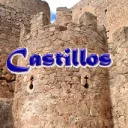• SEGORBE Iglesia de San Pedro, Catedral Basílica Santa María de la Asunción, Ayuntamiento, Museo Arqueológico, Acueducto, Torre de Botxi, Murallas, Iglesia Santa María, Seminario, e Iglesia de San Joaquín y Santa Ana.
 Segorbe es una localidad valenciana que mantiene en su casco viejo, una importante concentración de visitas culturales, además de últimamente ha crecido por lo que se refiere al Turismo de Interior.
Segorbe es una localidad valenciana que mantiene en su casco viejo, una importante concentración de visitas culturales, además de últimamente ha crecido por lo que se refiere al Turismo de Interior.
¡ No te defraudará ¡¡
Encontraras las siguientes visitas:
- Iglesia de San Pedro. Se comenzó a edificar en la mitad del S. XIII se consagró en 1247 y es, por tanto, la más antigua de Segorbe. Era uno de los templos llamados de reconquista. No obstante, nada resta de su disposición original, a causa de las importantes reformas efectuadas en los S. XVI que se le añadió el tramo del presbiterio y en el XIX la capilla de la Comunión.
- Iglesia San Joaquín y Santa Ana. Es de una sola nave de cuatro tamos con bóveda de cañón con lunetos sin crucero y con capillas laterales siendo su cabecera pentagonal con un amplio presbiterio, destaca su rica decoración barroca y esgrafiados.
- Seminario Menor Diocesano. Estamos ante el conjunto más monumental eclesiástico que posee Segorbe. De la Santísima Trinidad y San Pedro, corresponde a la antigua casa, colegio e iglesia de los Jesuitas, que establecieron en el año 1635.
- Ayuntamiento. La Casa Consistorial es el antigua palacio Ducal que construyó el segundo duque de Segorbe entre los años 1522 y 1562 Alfonso de Aragón y de Sicilia. Posee uno de los mejores artesonados de la comunidad en el salón de Plenos.
- Catedral Basílica de la Asunción. Las ogras se iniciaron en 1248 (S.XIII) sobre el lugar de una mezquita andalusí por el Obispo Pedro en estilo gótico de transición con algunos elementos del románico. En el claustro se encuentra el Museo catedralicio, con las obras que se salvaron en la guerra civil y bajo algunas de sus pandas las criptas funerarias.
- Acueducto, Torre de Botxí y Murallas. Torre del Botxí: Es llamada así debido a que era la residencia del verdugo. Es de cuerpo cilíndrico, con una altura de 17,30 m. Junto a la torre de la muralla se conservan arcos ojivales del acueducto que transportaba el agua de un manantial al interior de la ciudad.
- Junto al acueducto está el Museo Municipal con una representación de arqueología de diferentes culturas y una sección de Etnología.
- Y la Iglesia de Santa María de la Catedral. Esta iglesia del S. XVII con planta de cruz latina, de una sola nave con capillas laterales, distribuidas en los cuatro tramos divididos por arcos de medio punto.
Puedes descargarte el PDF con información, planos, fotos y contactos.
Pulsar sobre la imagen con el botón derecho y guardar como…para descargar y llevar el archivo PDF en tu tablet o smartphone.
-
SEGORBE Church of San Pedro, Cathedral Basilica Santa María de la Asunción, City Hall, Archaeological Museum, Aqueduct, Botxi Tower, Walls, Santa María Church, Seminary, and Church of San Joaquín and Santa Ana.
Segorbe is a Valencian town that maintains in its old town, an important concentration of cultural visits, in addition to lately it has grown as regards the Tourism of Interior.
Will not disappoint you
You will find the following visits:
- St. Peter’s Church. It began to be built in the middle of S. XIII was consecrated in 1247 and is, therefore, the oldest of Segorbe. It was one of the so-called reconquest temples. However, nothing remains of its original disposition, because of the important reforms made in the sixteenth century that the section of the presbytery was added and in the nineteenth the chapel of the Communion.
- San Joaquín and Santa Ana Church. It has a single nave of four tamos with a barrel vault with lunettes without a transept and with lateral chapels. Its pentagonal head with a wide presbytery, emphasizes its rich baroque decoration and sgraffito.
- Diocesan Minor Seminary. We are before the most monumental ecclesiastical set that Segorbe has. Of the Santísima Trinidad and San Pedro, it corresponds to the old house, school and church of the Jesuits, which they established in the year 1635.
- Town hall. The Town Hall is the old Ducal palace built by the Second Duke of Segorbe between 1522 and 1562 Alfonso de Aragón and Sicily. It has one of the best coffered ceilings in the community in the Plenary Hall.
- Basilica of the Assumption Cathedral. The ogras began in 1248 (13th century) on the site of an Andalusian mosque by Bishop Pedro in a transitional Gothic style with some Romanesque elements. In the cloister is the Cathedral Museum, with the works that were saved in the civil war and under some of their pandas the funeral crypts.
- Aqueduct, Torre de Botxi and Walls. Torre del Botxí: It is called that because it was the residence of the executioner. It has a cylindrical body, with a height of 17.30 m. Next to the tower of the wall are preserved arches of the aqueduct that carried water from a spring into the city.
- Next to the aqueduct is the Municipal Museum with a representation of archeology of different cultures and a section of Ethnology.
- And the Church of Santa María de la Catedral. This church of the S. XVII with a Latin cross plan, with a single nave with lateral chapels, distributed in four sections divided by arches.
You can download the PDF with information, plans, photos and contacts.
Click on the image with the right button and save as … to download and bring the PDF file to your tablet or smartphone
-
SEGORBE Église de San Pedro, basilique-cathédrale Santa María de la Asunción, hôtel de ville, musée archéologique, aqueduc, tour Botxi, murs, église Santa María, séminaire et église de San Joaquín et Santa Ana.
Segorbe est une ville valencienne qui maintient dans sa vieille ville une importante concentration de visites culturelles, en plus de la croissance récente du tourisme d’intérieur.
Vous ne serez pas déçu!
Vous trouverez les visites suivantes:
- Église de San Pedro. Il a commencé à être construit au milieu de S. XIII a été consacré en 1247 et est donc le plus ancien de Segorbe. C’était l’un des soi-disant temples de la reconquête. Cependant, il ne reste plus rien de sa disposition initiale, en raison des réformes importantes entreprises au XVIe siècle par l’ajout de la section du presbytère et au XIXe siècle de la chapelle de la Communion.
- Église de San Joaquín et Santa Ana: une nef unique de quatre tamos avec une voûte en berceau avec lunettes sans transept et des chapelles latérales, sa tête pentagonale avec un large presbytère souligne son riche décor baroque et ses sgraffites.
- Petit séminaire diocésain. Nous sommes devant le plus important ensemble ecclésiastique de Segorbe. De la Santísima Trinidad et de San Pedro, il correspond à la vieille maison, à l’école et à l’église des jésuites, qu’ils fondèrent en 1635.
- Mairie. La mairie est l’ancien palais ducal construit par le deuxième duc de Segorbe entre 1522 et 1562 Alfonso de Aragón et la Sicile. Il possède l’un des meilleurs plafonds à caissons de la communauté dans la salle plénière.
- Basilique de la cathédrale de l’Assomption. Les ogras ont débuté en 1248 (XIIIe siècle) sur le site d’une mosquée andalouse de l’évêque Pedro dans un style gothique de transition avec quelques éléments romans. Dans le cloître se trouve le musée de la cathédrale, où sont conservées les œuvres de la guerre civile et, sous certains pandas, les cryptes funéraires.
- Aqueduc, Torre de Botxi et Murs. Torre del Botxí: Cela s’appelle comme ça parce que c’était la résidence du bourreau. Il a un corps cylindrique, d’une hauteur de 17,30 m. À côté de la tour du mur sont conservées des arches de l’aqueduc qui transportaient l’eau d’une source dans la ville.
- À côté de l’aqueduc se trouve le musée municipal, qui présente une section d’archéologie de différentes cultures et une section d’ethnologie.
- Et l’église de Santa María de la Catedral. Cette église du XVIIe siècle à plan en croix latine, à une nef avec des chapelles latérales, réparties en quatre sections divisées par des arcs.
Vous pouvez télécharger le PDF avec des informations, des plans, des photos et des contacts.
Cliquez sur l’image avec le bouton droit et enregistrez sous … pour télécharger et importer le fichier PDF sur votre tablette ou votre smartphone.
-
SEGORBE Kirche San Pedro, Kathedrale Santa María de la Asunción, Rathaus, Archäologisches Museum, Aquädukt, Botxi-Turm, Mauern, Kirche Santa María, Priesterseminar und Kirche San Joaquín und Santa Ana.
Segorbe ist eine valencianische Stadt, die in ihrer Altstadt eine bedeutende Konzentration kultureller Besichtigungen unterhält. In letzter Zeit ist sie auch in Bezug auf den Innentourismus gewachsen.
Sie werden nicht enttäuscht sein!
Sie finden folgende Besuche:
- Kirche von San Pedro. Es wurde in der Mitte von S. XIII gebaut, wurde 1247 eingeweiht und ist daher das älteste von Segorbe. Es war einer der sogenannten Wiedereroberungstempel. Von der ursprünglichen Verfügung ist jedoch nichts übrig geblieben, da im 16. Jahrhundert der Abschnitt des Presbyteriums hinzugefügt wurde und im 19. Jahrhundert die Kapelle der Kommunion.
- Kirche San Joaquín und Santa Ana: Sie besteht aus einem einzigen Kirchenschiff aus vier Tamos mit einem Tonnengewölbe mit unbesetzten Lünetten und seitlichen Kapellen. Ihr fünfeckiger Kopf mit breitem Presbyterium unterstreicht die reiche Barockverzierung und den Sgraffito.
- Kleines Seminar der Diözese. Wir stehen vor dem monumentalsten kirchlichen Satz, den Segorbe hat. Von den Santísima Trinidad und San Pedro entspricht es dem alten Haus, der Schule und der Kirche der Jesuiten, die sie im Jahre 1635 errichteten.
- Rathaus. Das Rathaus ist der alte Herzogspalast, der vom Zweiten Herzog von Segorbe zwischen 1522 und 1562 Alfonso de Aragón und Sizilien errichtet wurde. Es verfügt über eine der besten Kassettendecken der Gemeinde im Plenarsaal.
- Basilika Mariä Himmelfahrt. Das Ogras begann im Jahr 1248 (13. Jahrhundert) an der Stelle einer andalusischen Moschee von Bischof Pedro in einem gotischen Übergangsstil mit einigen romanischen Elementen. Im Kreuzgang befindet sich das Cathedral Museum mit den im Bürgerkrieg geretteten Werken und unter einigen ihrer Pandas die Bestattungskrypten.
- Aquädukt, Torre de Botxi und Mauern. Torre del Botxí: Man nennt es so, weil es der Wohnsitz des Henkers war. Es hat einen zylindrischen Körper mit einer Höhe von 17.30 m. Neben dem Turm der Mauer sind Bögen des Aquädukts erhalten, die Wasser von einer Quelle in die Stadt brachten.
- Neben dem Aquädukt befindet sich das Stadtmuseum mit einer Darstellung der Archäologie verschiedener Kulturen und einer Abteilung für Ethnologie.
- Und die Kirche Santa María de la Catedral. Diese Kirche des S. XVII mit einem lateinischen Kreuzplan, mit einem einzigen Kirchenschiff mit Seitenkapellen, ist in vier durch Bögen unterteilte Abschnitte aufgeteilt.
Sie können das PDF mit Informationen, Plänen, Fotos und Kontakten herunterladen.
Klicken Sie mit der rechten Maustaste auf das Bild und speichern Sie es als …, um die PDF-Datei herunterzuladen und auf Ihr Tablet oder Smartphone zu laden.

 castillode.wordpress.com
castillode.wordpress.com museode.wordpress.com
museode.wordpress.com